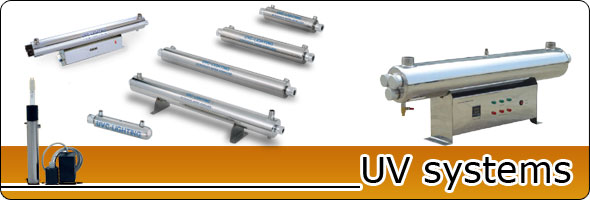
WHAT ARE UV RAYS
The small part of electro-magnetic spectrum having wave lengths included between 100 and 400 nm (thousandths of micron) is defined as space of the ultra-violet irradiation. The UV-C are part of the subspace characterized by the wave lengths included between 100 and 280 nm. Electro-magnetic waves with different wave length and width induce interactions with the matter of different nature, the UV-C irradiation with l= 254nm is particularly interesting thanks to its marked germicidal power.

WHY DO THEY WORKS
The high germicidal power of this wave length must be sought in DNA and in the link of its fundamental components (nucleotids). DNA is a macromolecule present in all living organisms in which all information necessary for life and reproduction reside. The alteration, induced by the UV-C irradiation, of some chemical links present among nucleotids is able to change the information contained and conveyed by DNA, these alterations prevent its normal activity and this irreversibly leads to the cellular death.
HOW MUCH DO THEY WORK
For being effective in the disinfection, an electro-magnetic wave, besides being of a certain kind (L = 254nm) it must possess also a minimum value of intensity to be able to ensure a minimum dose to water. A UV sterilizer, if correctly sized, is able to give water a dose sufficient for reducing almost all the commonest micro-organisms present in water. Normally a UV disinfection system must have a UV dose higher than 300 J/m2.
HOW THEY ARE PRODUCED
In nature the UV-C rays are part of the secondary cosmic irradiation which, interacting with the high strata of the terrestrial atmosphere, generates ozone and with a lower energy, it reaches ground as tanning UV(A+B) irradiation. Artificially UV-C rays are produced with the help of special fluorescent lamps containing mercury fumes, these lamps are made of a very pure quartz (>99.99% SiO2) transparent to the UV-C light which they emit in an almost monochromatic form (>95% of Ć = 254nm).
WHY THEY ARE CONVENIENT
Among the several advantages offered by this kind of technology we mention:
- environmental treatment (without addition of chemicals, without alteration of taste)
- no danger of over-dosing and no alteration of the characteristic of water
- quick action (without any stocking tank) the time is the one of passing through the sterilizer
- compatibility with the other technologies (filtration, softening, etc) for a complete treatment of water
- cheapness and practicalness thanks to the low consumption of electrical energy and to the little required servicing.
APPLICATIONS
Point of entry(POE) in the home or industry, point of use(POU) for water purifiers such as reverse osmosis, microfiltration, drinking water, food processing such as dairy companies, restaurants, beer factories and bakeries, medical, industrial processing, aquarium, swimming pool units, aquaculture, laboratories.
| Reverse Osmosis Installation | |
 |
|
| Industrial and Residential Use | |
 |
|
BENEFITS
Philips Germicidal Sterilamp uses UV-C technology, which allows for the emission of UV-C energy to disinfect water. The Philips Germicidal Sterilamp is then a cost effective and environmentally responsible disinfection alternative to chemical for water treatment.
- Effective for all types of microorganisms, including bacteria, viruses, fungus, and protozoa such as Cryptosporidium and Giardia.
- No disinfection by-products (DBPs) of health concern formed.
- UVC acts instantly.
- Low capital and operating cost.
- Easy to operate and maintain.
- Does not change the water taste.
- Safe and environmentally-friendly.
- No overdose issues and dose can be easily adapted to specific needs.
change filters to improve your search.



.jpg)

